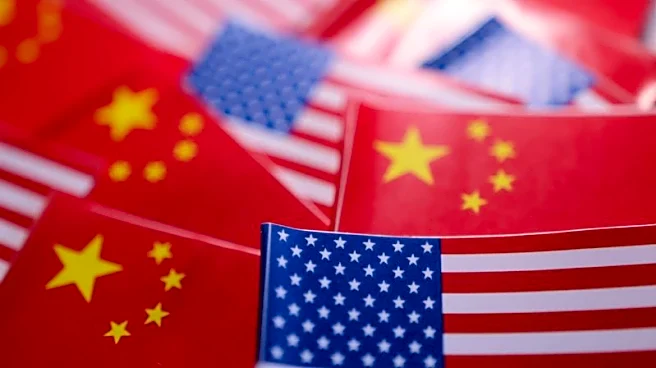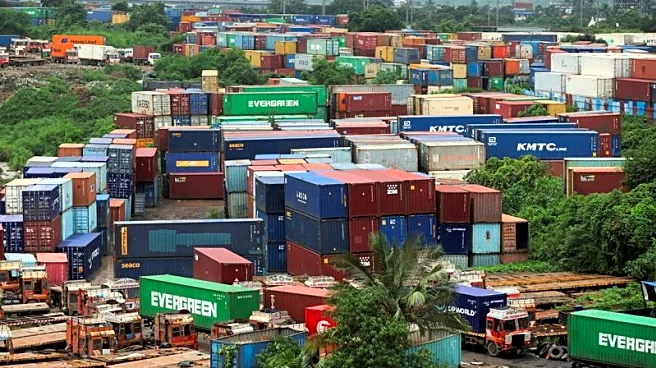What's Happening?
In 2025, President Donald Trump reinstated and expanded tariffs on imports, including a universal 10% tariff on all goods, 25% duties on autos and parts, and a doubling of steel and aluminum tariffs to 50%. These measures targeted China, Canada, Mexico,
and other nations, reigniting a global trade war. U.S. trade partners retaliated or sought exemptions, with China and the U.S. reaching a late-2025 truce to avert a 100% tariff escalation. The tariffs have led to significant industry impacts, with U.S. steelmakers benefiting from tariff protection, while automakers and manufacturers face higher input costs and supply chain disruptions. The market initially reacted negatively, but rebounded as global central banks eased policies and tech companies reported strong earnings.
Why It's Important?
The reimposition of tariffs by President Trump has significant implications for global trade dynamics and the U.S. economy. While certain domestic industries like steel and aluminum have benefited from protection, others such as automotive and tech face increased costs and supply chain challenges. The tariffs have contributed to inflationary pressures, with an estimated $1,200 'tax' per U.S. household due to higher prices. The trade war has also strained relationships with key allies and trading partners, leading to geopolitical tensions and potential shifts in global trade alliances. The economic impact includes a contraction in U.S. GDP and increased market volatility, highlighting the complex interplay between trade policy and economic stability.
What's Next?
The future of U.S. trade policy under President Trump remains uncertain, with potential legal challenges to his use of emergency tariff powers. The Supreme Court is reviewing the legality of these tariffs, which could limit Trump's ability to impose or raise tariffs unilaterally. Additionally, the temporary truce with China sets the stage for either further détente or renewed conflict in late 2026. Domestically, if inflation continues to rise or economic growth falters, there may be pressure to roll back tariffs to alleviate consumer costs. Internationally, the evolving trade landscape may lead to new alliances and shifts in global supply chains as countries seek to mitigate tariff impacts.
Beyond the Headlines
The broader implications of Trump's tariff policies extend beyond immediate economic effects. The use of tariffs as a strategic tool in foreign policy highlights the intersection of economic and geopolitical interests. The tariffs have accelerated shifts in global trade patterns, with countries exploring 'friend-shoring' and new trade alliances to reduce reliance on U.S. markets. This trend towards managed trade and geopolitical competition in commerce could reshape the global economic order, challenging the principles of free trade and multilateral cooperation. The long-term legacy of Trump's tariffs will depend on their impact on U.S. industry, global trade relationships, and economic governance.
















